What is an NFT?
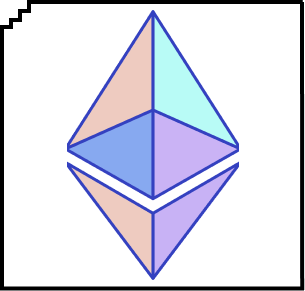
by
by ethereum.org team
Published August 3, 2022NFTs are tokens that we can use to represent ownership of unique items. They let us tokenise things like art, collectibles, even real estate. They can only have one official owner at a time and they’re secured by the Ethereum blockchain – no one can modify the record of ownership or copy/paste a new NFT into existence.
NFT stands for non-fungible token. Non-fungible is an economic term that you could use to describe things like your furniture, a song file, or your computer. These things are not interchangeable for other items because they have unique properties.
Fungible items, on the other hand, can be exchanged because their value defines them rather than their unique properties. For example, ETH or dollars are fungible because 1 ETH / $1 USD is exchangeable for another 1 ETH / $1 USD.
How do NFTs work?
NFTs are different from ERC-20 tokens, such as DAI or LINK, in that each individual token is completely unique and is not divisible. NFTs give the ability to assign or claim ownership of any unique piece of digital data, trackable by using Ethereum’s blockchain as a public ledger. An NFT is minted from digital objects as a representation of digital or non-digital assets. For example, an NFT could represent:
An NFT can only have one owner at a time. Ownership is managed through the uniqueID and metadata that no other token can replicate. NFTs are minted through smart contracts that assign ownership and manage the transferability of the NFT’s. When someone creates or mints an NFT, they execute code stored in smart contracts that conform to different standards, such as ERC-721. This information is added to the blockchain where the NFT is being managed. The minting process, from a high level, has the following steps that it goes through:
• Creating a new block
• Validating information
• Recording information into the blockchain
NFT’s have some special properties:
• Each token minted has a unique identifier that is directly linked to one Ethereum address.
• They’re not directly interchangeable with other tokens 1:1. For example 1 ETH is exactly the same as another ETH. This isn’t the case with NFTs.
• Each token has an owner and this information is easily verifiable.
• They live on Ethereum and can be bought and sold on any Ethereum-based NFT market.
In other words, if you own an NFT:
• You can easily prove you own it.
• Proving you own an NFT is very similar to proving you have ETH in your account.
• For example, let’s say you purchase an NFT, and the ownership of the unique token is transferred to your wallet via your public address.
• The token proves that your copy of the digital file is the original.
• Your private key is proof-of-ownership of the original.
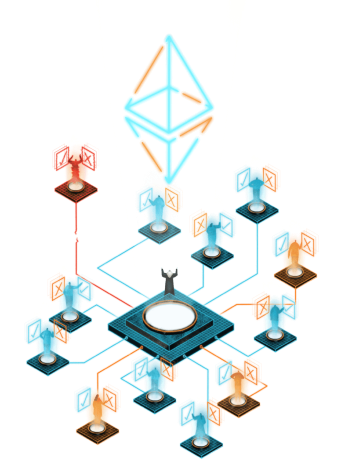
• The content creator’s public key serves as a certificate of authenticity for that particular digital artefact.
o The creators public key is essentially a permanent part of the token’s history. The creator’s public key can demonstrate that the token you hold was created by a particular individual, thus contributing to its market value (vs a counterfeit).
• Another way to think about proving you own the NFT is by signing messages to prove you own the private key behind the address.
o As mentioned above, your private key is proof-of-ownership of the original. This tells us that the private keys behind that address control the NFT.
o A signed message can be used as proof that you own your private keys without revealing them to anybody and thus proving you own the NFT as well!
• No one can manipulate it in any way.
• You can sell it, and in some cases this will earn the original creator resale royalties.
• Or, you can hold it forever, resting comfortably knowing your asset is secured by your wallet on Ethereum.
If you own an NFT
You can easily prove you own it.
Your private key is proof-of-ownership of the original. No one can manipulate it in any way. You can sell it, and in some cases this will earn the original creator resale royalties.
And if you create an NFT:
• You can easily prove you’re the creator.
• You determine the scarcity.
• You can earn royalties every time it’s sold.
• You can sell it on any NFT market or peer-to-peer. You’re not locked in to any platform and you don’t need anyone to intermediate.
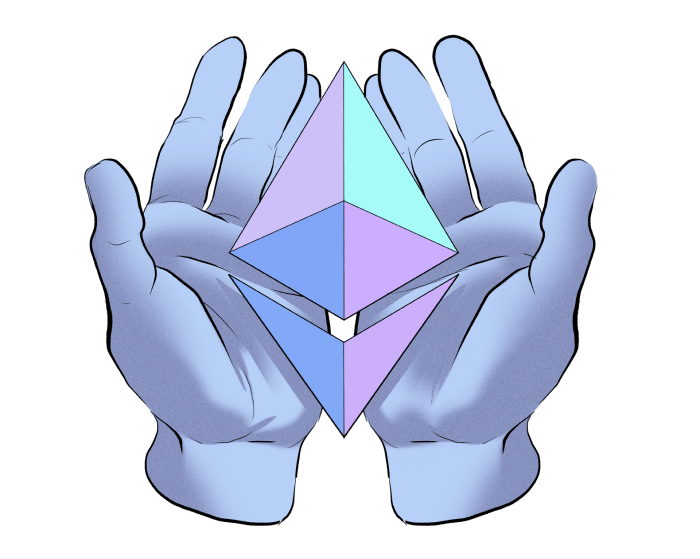
Scarcity
The creator of an NFT gets to decide the scarcity of their asset.
For example, consider a ticket to a sporting event. Just as an organizer of an event can choose how many tickets to sell, the creator of an NFT can decide how many replicas exist. Sometimes these are exact replicas, such as 5000 General Admission tickets. Sometimes several are minted that are very similar, but each slightly different, such as a ticket with an assigned seat. In another case, the creator may want to create an NFT where only one is minted as a special rare collectible.
In these cases, each NFT would still have a unique identifier (like a bar code on a traditional “ticket”), with only one owner. The intended scarcity of the NFT matters, and is up to the creator. A creator may intend to make each NFT completely unique to create scarcity, or have reasons to produce several thousand replicas. Remember, this information is all public.
Royalties
Some NFTs will automatically pay out royalties to their creators when they’re sold. This is still a developing concept but it’s one of the most powerful. Original owners of EulerBeats Originals earn an 8% royalty every time the NFT is sold on. And some platforms, like Foundation and Zora, support royalties for their artists.
This is completely automatic so creators can just sit back and earn royalties as their work is sold from person to person. At the moment, figuring out royalties is very manual and lacks accuracy – a lot of creators don’t get paid what they deserve. If your NFT has a royalty programmed into it, you’ll never miss out.
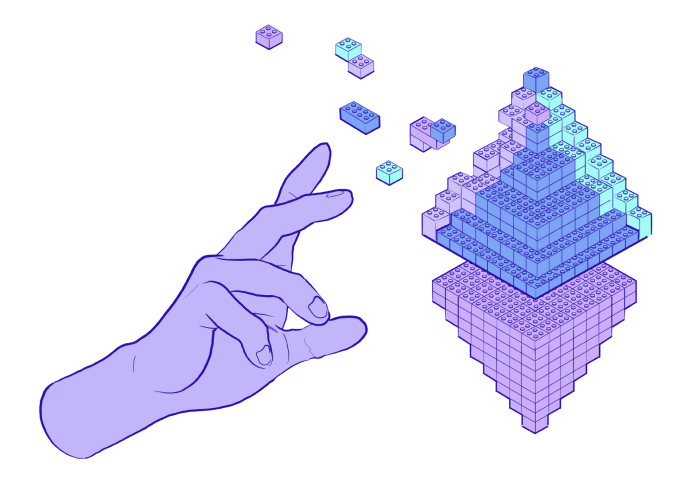
Ethereum and NFTs
Ethereum makes it possible for NFTs to work for a number of reasons:
• Transaction history and token metadata is publicly verifiable – it’s simple to prove ownership history.
• Once a transaction is confirmed, it’s nearly impossible to manipulate that data to “steal” ownership.
• Trading NFTs can happen peer-to-peer without needing platforms that can take large cuts as compensation.
• All Ethereum products share the same “backend”. Put another way, all Ethereum products can easily understand each other – this makes NFTs portable across products. You can buy an NFT on one product and sell it on another easily. As a creator you can list your NFTs on multiple products at the same time – every product will have the most up-to-date ownership information.
• Ethereum never goes down, meaning your tokens will always be available to sell.
The environmental impact of NFTs
NFTs are growing in popularity which means they’re also coming under increased scrutiny – especially over their carbon footprint.
To clarify a few things:
• NFTs aren’t directly increasing the carbon footprint of Ethereum.
• The way Ethereum keeps your funds and assets secure is currently energy-intensive but it’s about to improve.
• Once improved, Ethereum’s carbon footprint will be 99.95% better, making it more energy efficient than many existing industries.
NFTs are growing in popularity which means they’re also coming under increased scrutiny – especially over their carbon footprint.
To explain further we’re going to have to get a little more technical so bear with us…
The whole NFT ecosystem works because Ethereum is decentralized and secure.
Decentralized meaning you and everyone else can verify you own something. All without trusting or granting custody to a third party who can impose their own rules at will. It also means your NFT is portable across many different products and markets.
Secure meaning no one can copy/paste your NFT or steal it.
These qualities of Ethereum makes digitally owning unique items and getting a fair price for your content possible. But it comes at a cost. Blockchains like Bitcoin and Ethereum are energy intensive right now because it takes a lot of energy to preserve these qualities. If it was easy to rewrite Ethereum’s history to steal NFTs or cryptocurrency, the system collapses.
A Greener Future…
For as long as Ethereum has been around, the energy-consumption of mining has been a huge focus area for developers and researchers. And the vision has always been to replace it as soon as possible. More on Ethereum’s vision. This vision is being delivered right now.
A Greener Ethereum
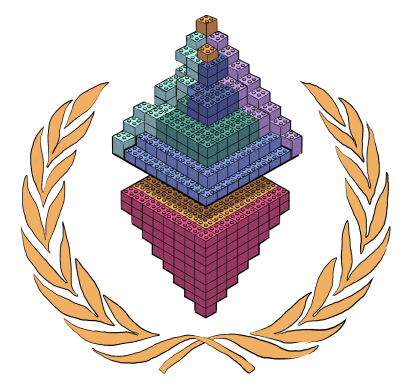
Ethereum is currently going through a series of upgrades that will replace mining with staking. This will remove computing power as a security mechanism, and reduce Ethereum’s carbon footprint by ~99.95%1. In this world, stakers commit funds instead of computing power to secure the network.
The energy-cost of Ethereum will become the cost of running a home computer multiplied by the number of nodes in the network. If there are 10,000 nodes in the network and the cost of running a home computer is roughly 525kWh per year. That’s 5,250,000kWh1 per year for the entire network.
We can use this to compare the future of Ethereum to a global service like Visa. 100,000 Visa transactions uses 149kWh of energy2. In proof-of-stake Ethereum, that same number of trans-
actions would cost 17.4kWh of energy or ~11% of the total energy3. That’s without considering the many optimizations being worked on in parallel to the consensus layer and shard chains, like rollups. It could be as little as 0.1666666667kWh of energy for 100,000 transactions.
Importantly this improves the energy efficiency while preserving Ethereum’s decentralization and security. Many other blockchains out there might already use some form of staking, but they’re secured by a select few stakers, not the thousands that Ethereum will have. The more decentralization, the more secure the system.
Extracted from the offical website of Ethereum. Click here for the full article.
